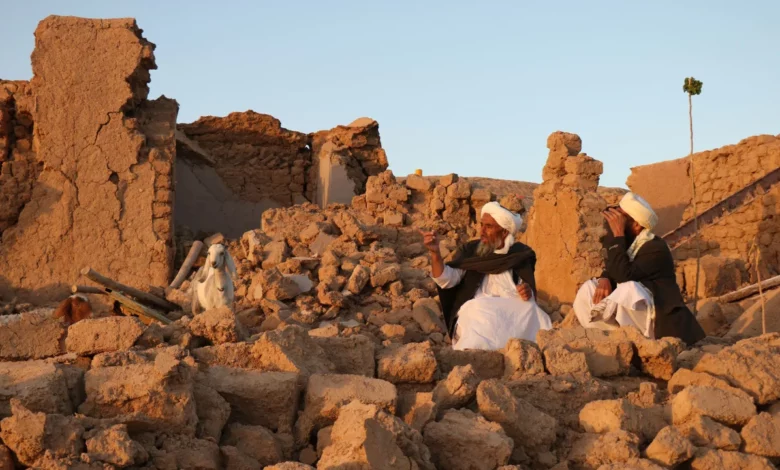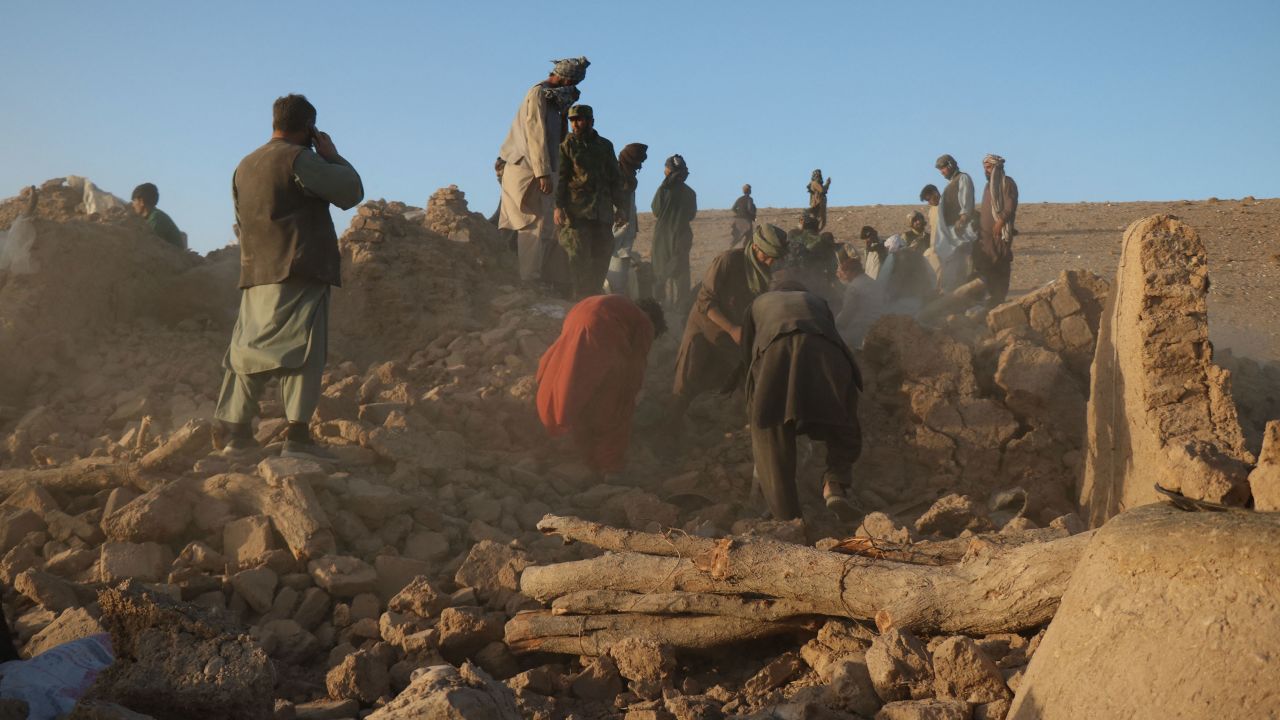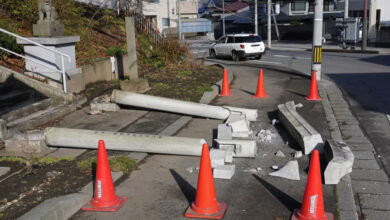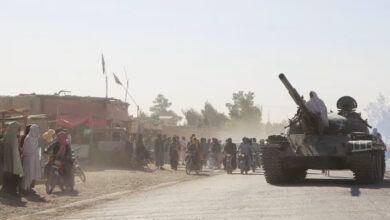
The 6.3 magnitude earthquake struck on Saturday 25 miles (40 kilometers) west of Herat city in the western Herat province – the third largest in Afghanistan.
Abdul Wahed Rayan, a senior Taliban official from the Ministry of Information and Culture, told CNN that they estimated close to 2,000 people have been killed. But he warned that figure could rise with rescue operations ongoing and people still trapped under the rubble.
The initial quake was also felt in neighboring provinces of Badghis and Farah and was followed by multiple aftershocks.
An earlier assessments from the UN had indicated a lower toll of around 100 dead and 500 injured. Close to 500 houses were reportedly destroyed and 135 buildings damaged, said the UN’s Office for the Coordination of Humanitarian Affairs (OCHA).
“In total, 4,200 people (600 families) are assessed to have been affected to date,” OCHA said.
Images showed massive heaps of debris and rubble after buildings collapsed. Crowds of survivors had gathered in the streets for safety.
“Mahal Wadakah is understood to be the worst affected village,” the UN said, reporting at least 20 deaths. Other badly affected areas include Dasht Hows, Bahadorzai, Zoryan and Koshkak, it added.
“Additionally, an estimated 300 families (around 2,100 people) are reported to have been displaced to Herat City where they are living in abandoned buildings.”

Afghanistan has suffered significant damage from a series of recent earthquakes amid an ongoing dire economic and hunger crises, killing and displacing tens of thousands combined.
The country has long been one of Asia’s poorest and has been ravaged by conflict for decades. But its ability to respond to natural disasters has been further hampered since the Taliban seized power in 2021 following the chaotic US withdrawal, an event that saw many international aid groups pull out.
It also led to Washington and its allies freezing about $7 billion of the country’s foreign reserves and cutting off international funding. The situation has crippled an economy already heavily dependent on aid.
Last week the World Bank warned two thirds of Afghan families currently face “significant challenged in maintaining their livelihoods”.
That makes is far harder for Afghans to recover from earthquakes, which are a regular phenomenon in a country that often experiences seismic activity.
A deadly quake in March struck northeastern Afghanistan, sending residents fleeing from their homes as it brought down entire buildings and triggered devastating landslides.
Tremors were also felt in several major Pakistani cities and as far away as the Indian capital New Delhi.
A 5.9 magnitude earthquake last June in the eastern Paktika and Khost provinces bordering Pakistan, killed more than a thousand people and sent aid groups scrambling to reach victims and survivors in areas blighted by poor infrastructure.
The quake had coincided with heavy monsoon rains and winds which greatly hampered search efforts and helicopter travel.
And a 5.6 magnitude earthquake on January 17, 2022 struck Badghis, another western province near Herat bordering Turkmenistan, killed more than 20 people and reduced hundreds of brick homes to rubble.




